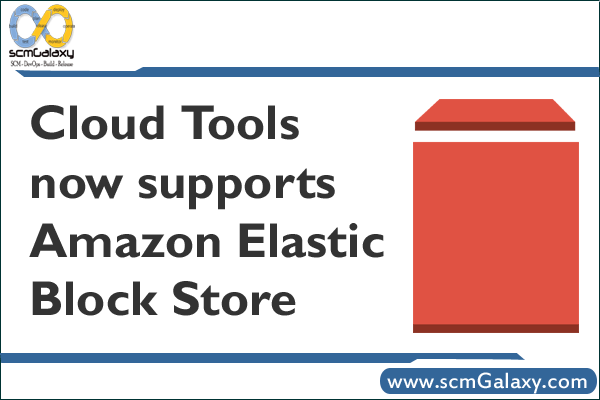

One of the exciting new features of Amazon EC2 is Elastic Block Store, which provides truly durable storage for your instances. Prior to EBS, the contents of the file system disappeared once an instance was terminated. This meant that if you wanted to run a database server on EC2 you had to use MySql master-slave replication with frequent backups to Amazon S3. With EBS running a database on EC2 is a lot easier. You can simply create an EBS volume, attach it to an instance, and create a filesystem that gives you long-lived disk storage for your database. Moreover, you can easily back up an EBS volume by creating a snapshot (stored in S3). And, if you ever need to restore your data, you can create a volume from a snapshot.
Cloud tools now supports Amazon EBS. You can launch an application with a database stored on a brand new volume; on an existing volume; or on a volume created from a snapshot. You can also convert an already running application to use elastic block storage. Finally, you can create an EBS snapshot of the database. Currently, only the Maven plugin supports this functionality but I plan to update the Grails plugin shortly.
Please check out the project’s home page for more information and send me feedback.
I’m a DevOps/SRE/DevSecOps/Cloud Expert passionate about sharing knowledge and experiences. I am working at Cotocus. I blog tech insights at DevOps School, travel stories at Holiday Landmark, stock market tips at Stocks Mantra, health and fitness guidance at My Medic Plus, product reviews at I reviewed , and SEO strategies at Wizbrand.
Please find my social handles as below;
Rajesh Kumar Personal Website
Rajesh Kumar at YOUTUBE
Rajesh Kumar at INSTAGRAM
Rajesh Kumar at X
Rajesh Kumar at FACEBOOK
Rajesh Kumar at LINKEDIN
Rajesh Kumar at PINTEREST
Rajesh Kumar at QUORA
Rajesh Kumar at WIZBRAND

 Starting: 1st of Every Month
Starting: 1st of Every Month  +91 8409492687
+91 8409492687  Contact@DevOpsSchool.com
Contact@DevOpsSchool.com
